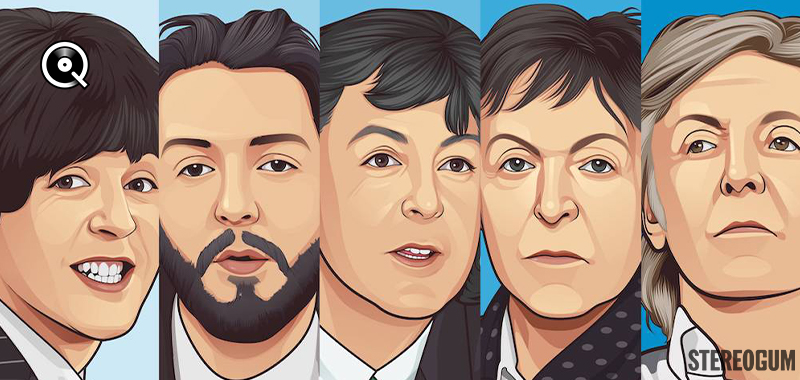McCartney (1970)
Paul McCartney was left dumbfounded on the 20th of September 1969 when John Lennon privately announced to his band mates that he intended to leave The Beatles. Nothing would be made public for months, but the news hit the Fab Four’s singer and bassist so hard he fell into a depression. It led McCartney to retreat to his farm in Campbeltown, Scotland, where he secretly began writing his first solo album. This wasn’t the first time he’d worked alone however, having written the soundtrack to the 1966 film The Family Way solo with producer George Martin. Nonetheless, the context made this record doubly historic. Its release in April 1970 made The Beatles' separation official with the famous press release announcing both the album's release and the end of McCartney’s collaboration with the group. Due to his desire to keep his new album discreet, McCartney became the first album made by a “bedroom producer”. He played all the instruments himself (guitar, bass, drums, keyboard…), with only his wife Linda lending her voice. The album was almost entirely recorded in his home, with some mixing and recording taking place in EMI Studios (now known as Abbey Road Studios). As you might expect, the album has a very Beatles sound with songs like 'Junk' and 'Teddy Boy' (which he had worked on with his ex-band members). It also featured the hit 'Maybe I'm Amazed', which propelled the album to the top of the British charts, dethroned only by the Simon & Garfunkel’s Bridge Over Troubled Water.
Ram (1971)
In the latter half of 1970—with half the world blaming him for the Fab Four’s break-up and his relationship with his former bandmates at an all-time low—McCartney took refuge in his music and travelled to the USA to record Ram in both New York and Los Angeles. This would be the first album officially attributed to Paul and Linda McCartney. This album seemed like a way for him to free himself from the influence of The Beatles. However, when it was released in May 1971, it wasn’t well-received by critics depsite its commercial success. Lennon admitted he thought it was a “dreadful album”, even referring to it as “muzak”. “At least there were hits on McCartney” he added. Lennon, who would release his album Imagine three months later, thought the album included jibes at him, particularly on the track 'Too Many People'. Nonetheless, with time Ram would eventually be recognised as one of McCartney's most inspired albums, and even led to the musician being credited as a pioneer of indie-pop. It was re-released in 2012, after a remastering at Abbey Road Studios, and it enjoyed a much better reception the second time around.
Band on the Run (1973)
In 1973, Paul McCartney stepped back into the limelight: he’d just released the huge hit 'Live and Let Die', which he’d written for the soundtrack of the eighth James Bond film. He then decided to head to Lagos to record the next album with his band Wings, in true ‘band on the run’ style. However, just before they were about to take off, two members pulled out: guitarist Henry McCullough and drummer Denny Seiwell. Alone with Linda and Denny Laine, he quickly became disillusioned. The working conditions in the studio proved to be tough, with local star Fela Kuti even calling McCartney a musical neo-colonialist. Despite the rough start everything ended well, with two singles that enjoyed immediate success (the catchy track 'Jet' and the mesmerising 'Band on the Run'). The album was a hit and went on to win two Grammys. After two less-than-stellar records (Wild Life and Red Rose Speedway), it catapulted Paul McCartney back to the top of the pop charts.
Create a free account to keep reading

















